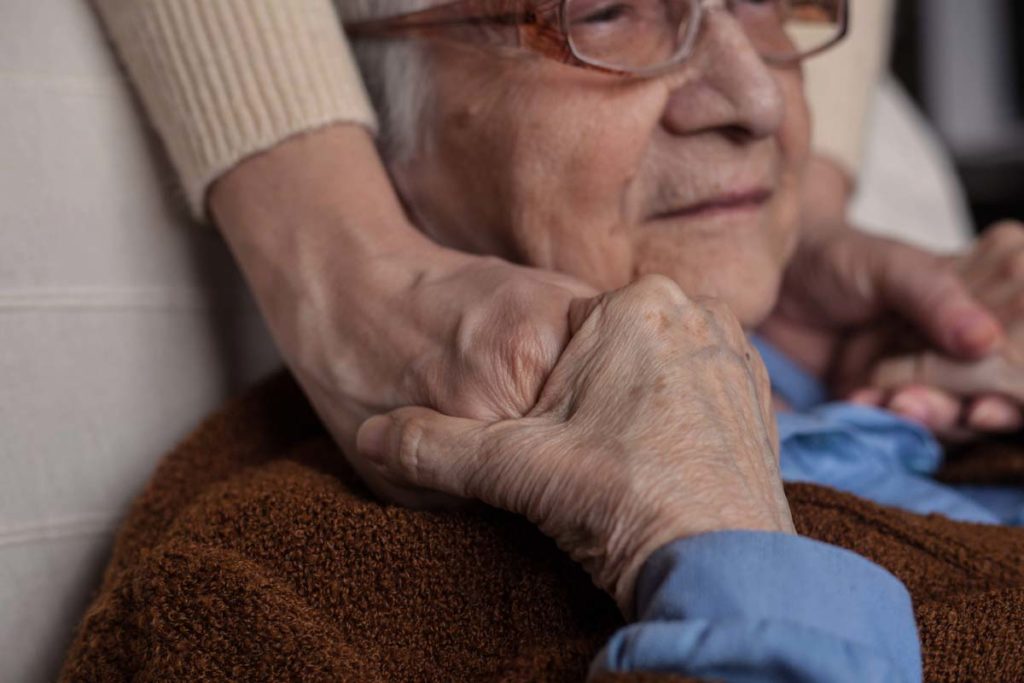If you reach a point in your career where there is no more that can be done for a terminal illness, or you decide to forego additional curative treatments, hospice offers a comprehensive approach to give you the best quality of life possible from that point forward.
Hospice Facts:
- 1.43 million Medicare beneficiaries were enrolled in hospice care for one day or more in 2016.
- 48% of Medicare decedents were enrolled in hospice at the time of their deaths.
- The average length of service for Medicare beneficiaries was 71 days, with the median length being 24 days.
- 98% of hospice care was provided at the Routine Home Care level.
- There are currently 4,382 Medicare-certified hospices in operation. The majority of hospices averaged less than 50 patients.
- Compared to home health care, hospice had significant growth in 2017, with 1.3 million Medicare enrollees—a 6.5% jump from 2016. 47.5% of these enrollees were at least 85, while only 13% of admitted patients were under 70.
- The top five hospice terminal diagnoses in 2017 were Alzheimer’s, COPD, heart failure, lung cancer, and senile degeneration of the brain.
Give Your Loved Ones The Best Care
Caring for parents as they age is never easy. The help from home care services allows you to maintain your relationship while providing the best care possible.
What Is Hospice?

Hospice is designed to support the more personal aspects of this life stage.
Hospice is a philosophy of care that offers many benefits to patients and family alike.
It can enrich, and sometimes salvage, the last stage of life. Almost a third of patients with a terminal illness die in the hospital, hooked up to machines that do little to halt the process of dying or ease the transition. Hospice, however, is designed to support the more personal aspects of this life stage: reflecting on one’s life and legacy, focusing on relationships in a deeper and more intentional way, achieving a sense of closure, and realizing any end-of-life goals like such as attending a wedding or getting financial affairs in order.
What Hospice Is Not
If you are considering hospice now or further down the line in your care, it is best to understand what hospice is…and what it is not.
Hospice is not a physical place. While there are separate hospice facilities along with hospice services in hospitals and long-term care facilities, hospice itself is not a brick-and-mortar location. It offers a specialized form of care that you can receive anywhere you are: your home, a care nursing home, assisted living facility, or hospital. Aside from medical care, spiritual and emotional support are offered to both the patient and family. Bereavement services are available before and after a loved one dies. Many long-term care facilities have a hospice unit where a patient’s case can be turned over.
Hospice is not only for patients who have a matter of days left.
In fact, caring for a seriously ill person at home is usually too difficult without a hospice team. Most people express a wish to die at home, but only about one in four ultimately do so with standard care. Hospices bring everything you might need to the home — medications, hospital bed, bedside toilet, expert consultants — tailored to your needs. Nevertheless, if you don’t want the hospice transition at your home, you do not have to have it there even if you are living there now.

Hospice is not only (or primarily) for cancer patients. Hospice is for anyone living with the end-stage of any chronic disease or life-limiting condition. The criteria to receive hospice care is a diagnosis of six months or less to live.
In fact, hospice is not only for the patient. Each hospice patient and his or her family is assigned an interdisciplinary team of professionals and trained volunteers. Professionals on this team include a doctor, registered nurse, social worker, home health aide, and chaplain and/or bereavement counselor. Volunteers may handle anything from preparing meals to staying with the patient to relieve a caregiver.
The interdisciplinary team writes a care plan for each patient and family. This plan helps everyone involved ensure that the patient and loved ones receive the care they need. It is normal for full-time registered nurses to provide care to about a dozen different families. Social workers often work with roughly two dozen hospice clients. If home health aides are necessary for personal care, these professionals tend to visit most frequently.
In any case, a professional’s visit frequency depends on the patient’s needs as well as the needs of both the patient and family as described in the care plan. The frequency of volunteers and spiritual care is often dependent upon availability and what the family requests.
The team does much more than provide medicine and manage that patient’s pain and symptoms. Team members help everyone touched by the terminal illness with the emotional, spiritual, and psychosocial aspects of dying. This includes grief support and counseling, but also guiding the family on how to care for the patient. Sometimes there are special services like speech therapy or physical therapy. When a caregiver needs respite time, they can either stay with the patient for a brief period or arrange short-term inpatient care (often when pain or symptoms become too difficult to manage in the home setting).
It’s not always easy for loved ones to witness the symptoms of dementia or understand the body language of someone who can no longer communicate. A hospice nurse can help interpret what’s happening, or explain the signs of imminent death. An aide or volunteer can help with personal care. A bereavement counselor can also be an ear or shoulder to lean on when a loved one needs it most.
Hospice is not only for patients who have a matter of days left. Nor should you wait until death is imminent – patients and families experience many additional benefits by starting hospice care earlier. Medicare’s Hospice Benefit was designed to cover the last six months of life. Enrollment can last even longer so long as the patient continues to qualify.
Hospice benefits don’t end with the patient’s life. Medicare-covered hospice services continue after death: you can make use of follow-up grief support for 12 months. Ultimately, hospice makes space for “the spirit, the love and the quieting of the mind” that tend to take precedence as life ends. Serious illness and dying aren’t just medical. As experts say, they are fundamentally personal.
Enrolling in hospice is not “giving up.” You may live longer during the time you have left. Research shows that hospice recipients live longer, on average, than those receiving standard care. One 2010 study of lung cancer patients found that they survived nearly three months longer. Another study of patients with the most common terminal diagnoses, found the same, ranging from an average of 20 more days with gallbladder cancer patients in the study to 69 days for those patients with breast cancer.
Transitioning to hospice doesn’t mean forgoing all medical care or waiting to die. It does, however, means shifting from one set of goals to another. Rather than focusing on finding a cure, the emphasis shifts to getting the best quality of life, regardless of the quantity of days left.

If you are worried about “giving up” medical care or anything else, think carefully about what you think you would be “giving up.” Even if a cure is no longer feasible, you can benefit from therapies that improve your symptoms and make you more comfortable. Sometimes this is even aggressive care.
Be aware that Medicare hospice rules currently preclude curative treatments. If you are not confident that you haven’t exhausted all of your efforts toward curing your condition, hospice may not be the best option for you right now. That said, Medicare has begun pilot programs to 141 hospices in 40 states to allow hospice patients to continue pursuing curative treatments.
Hospice is not cost-prohibitive. Most patients are covered by the Medicare Hospice Benefit, which has no deductibles and limited copayments for hospice services. You must have Medicare Part A and be at least 65 to qualify. Your doctor and a hospice medical director must certify terminal illness, which implies a life expectancy is six months or less if the condition runs its normal course. Either you – or someone whom you have given durable power of attorney – opts into hospice care and therefore waives the right to Medicare coverage for any services to treat the terminal illness in question. Medicare pays the hospice and hospice-related medical expenses, along with any services not related to the terminal illness.
Medicaid benefits are similar to the Medicare Hospice benefits and apply in most states. The Veteran’s Health Administration also covers hospice care and benefits that are comparable to those of Medicare Hospice. You may also find that you have private insurance coverage for some hospice care. Ask your insurer if hospice is covered and under what circumstances. Among private insurers, there are variations in qualifications and covered benefits.
If you do not have insurance coverage and cannot afford hospice, some hospices may provide care free of charge or on a sliding scale basis. This financial assistance is provided through donations, gifts, grants or community sources. There are also nonprofit organizations that can help these individuals. Call your local hospices to see if this is an option for you.
Hospice services are usually available for as long as they are needed. In reality, there is no foolproof way of predicting how much time any terminally patient has left. If someone receiving hospice care lives beyond six months, services are usually still covered by Medicare, Medicaid and many private insurers so long as a physician recertifies that the person is terminally ill and meets hospice care requirements. Be sure to check with your insurance provider about extended coverage.

Hospice does not mean surrendering control over your medical care. You may continue to see your general practitioner along with the professionals on his or her interdisciplinary team. Many hospices offer additional services: psychologists, psychiatrists, art or pet therapists, nutritionists, as well as occupational, speech, massage and physical therapists. With all of these services, the person receiving care still remains in charge of his or her medical decisions.
Certain kinds of healthcare like dental care are not emphasized in many hospice units, even though many dentists believe that it is vital for both emotional as well as physical support and improved quality of life. Your hospice provider may not have a dentist, but you can ask your interdisciplinary team for help in this area if you think it can enhance your quality of life and dignity.
Hospice does not drug people to hasten death. Hospice professionals do not rush or prolong death. Their primary goal is pain management. Drugs like morphine are used in small doses to make a patient comfortable, treat anxiety, and reduce pain. The goal of pain management in hospice is to enable you to live well — not sedate you.People often mistakenly think that pain medicine will make the person sleepy to the point where he or she cannot interact. But living with pain unnecessarily makes anyone more tired and irritable and compromises their quality of life.
Hospice is not necessarily a permanent commitment. Even though you must qualify to enter hospice, you can opt out at any time. If you start hospice and realize it’s not for you, you can quit. As long as you qualify, you also have the ability to re-enroll.
Give Your Loved Ones The Best Care
Caring for parents as they age is never easy. The help from home care services allows you to maintain your relationship while providing the best care possible.
Levels of Hospice Care

Hospice patients may require differing intensities of care during the course of their disease. The Medicare Hospice Benefit affords patients four levels of care to meet their clinical needs.
Most patients and families choose Routine Hospice Care. A patient can receive this at home, an assisted living residence, or at a nursing facility – wherever he or she is living.
Hospice patients may require differing intensities of care during the course of their disease.
A Medicare-certified hospital, hospice inpatient facility, or nursing home can also provide General Inpatient Care. This provides direct care with registered nursing available 24 hours a day for pain control or other acute symptom management that cannot feasibly be provided in any other setting. General Inpatient Care begins when other efforts to manage symptoms have been ineffective.
Another option for managing pain and acute symptoms is Continuous Home Care, which is offered between eight and 24 hours a day. Though it is paired with caregiver and hospice aide services, continuous home care is predominately nursing care.
A temporary option for up to five consecutive days is Inpatient Respite Care in a hospital, long term care center, or hospice facility with enough 24-hour nursing personnel present on all shifts to guarantee that patient’s needs are met. This is to offer relief to caregivers.
Medicare coverage for each care level includes all services related to medication, medical equipment, supplies, and the Interdisciplinary team’s services…anything related to his or her terminal illness.
Hospice patients may require differing intensities of care during the course of their disease. While you can enter hospice at any level of care, remember that circumstances may require a change in care levels.
Because keeping a patient comfortable and pain-free is an important component in hospice care, many programs have developed ways to measure how comfortable a patient is during the course of their stay. They work with the patient’s physician to make sure that medication, therapies, and procedures are designed to achieve whatever goals are outlined in the patient’s care plan. The care plan is reviewed frequently to make sure any changes and new goals are in the plan.
Choosing a Hospice

You will want to be sure that your hospice program is Medicare-certified if, like the vast majority of patients, you will seek Medicare coverage. You should also check to see if it is accredited. While outside accreditation isn’t required, hospices that do secure it have made a special commitment to quality care. Organizations like the Joint Commission, the National Hospice and Palliative Care Organization, and Community Health Accreditation Partner have standards of excellence for participating hospices must meet.
The Affordable Care Act has required hospices that accept Medicare — almost all of them — to complete surveys and provide data about several quality measures, including how well they manage patients’ pain.
Your state may have an agency that certifies hospices. Find out if it has been surveyed by either a state or federal oversight organization. Up to this writing, The Affordable Care Act has required hospices that accept Medicare — almost all of them — to complete surveys and provide data about several quality measures, including how well they manage patients’ pain. Eventually the results will be publicly available online. For now, ask if a survey has been done and what the results show.
Another important, yet non-mandatory option is board certification. A medical director who is certified by a medical board as a palliative medicine specialist offers one more assurance of training, experience and overall quality.
Check to see how the agency has been open, and search for a list of any specialized services it offers to enhance the patient’s comfort. You will want a provider with a 24-7 call line. Hospice care is generally available “on-call” 24/7, regardless of whether the provider’s office is open. Most have nurses who can respond to a call for help within minutes. Some hospice chaplains and social workers are on call. If you or a loved one has Alzheimer’s, see if the workers have experience with Alzheimer’s patients.
Different hospice sizes come with different pros and cons. While providers with 100 or more patients may offer more resources, smaller ones may provide more personalized care. Ideally, a hospice nurse or nurse practitioner should manage a caseload with no more than 12 patients.
Give Your Loved Ones The Best Care
Caring for parents as they age is never easy. The help from home care services allows you to maintain your relationship while providing the best care possible.
When to Consider Hospice

How can you know when to try hospice? This should be part of ongoing discussions with your health care team— “ongoing” because goals and needs evolve. Ideally, hospice should begin when the patient is still able to give input on choosing the provider and other important healthcare decisions. It also helps family members make sure they understand the patient’s wishes and that everyone is on the same page.
But whatever stage of illness you or a loved one is at, the best time to learn more about hospice is now. End-of-life care and medical directives are never easy subjects to broach, yet it is best for family members to share their wishes long before it becomes an issue. This can greatly reduce stress for everyone concerned when the time for hospice is needed. Good communication in advance avoids putting patients in uncomfortable situations. It helps them make an educated decision that includes the advice and input of doctors and loved ones alike. This enables both the patient and family to reap the full benefits of hospice care.
Do you want to cite this page? Use our ready-made cite template.
